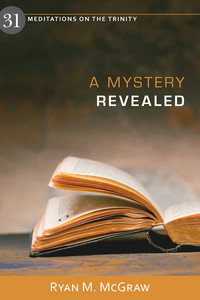Be sure to come back later this morning for a Q&A with the Author.
 Kay-9 The Robot Dog
Kay-9 The Robot Dog
by J.M. Gulmire
DETAILS: Publication Date: September 2, 2023 Format: eARC Length: 160 pg. Read Date: September 16, 2023

What’s Kay-9 The Robot Dog About?
Ryan is having a rough time. His dad is overseas with the military—and Zoom calls just aren’t cutting it (actually, they may be making it worse). His mom’s allergies prevent them from getting a pet—and all Ryan really wants in the world is a dog.
So, he gets the idea of making one. Not in a bio-chem laboratory or editing genes to create a truly hypo-allergenic canine or something. But a robotic dog. His friend/neighbor Marcus helps out when he can—and Marcus’ little sister, Mariah, pushes her way into the project, too (and actually has some good ideas and contributions).
It’s not long before Ryan has moved beyond making a toy—between experimentation, online research, spare computer parts, and a little luck—he’s on his way to creating a real artificial pet.
Gulmire Zags Where Others Zig
It was in the 1980s that I first discovered stories where a kid/young person created computers, robots, androids, or spacecraft far beyond the capabilities of most professional computer engineers/corporate entities.* And while I rarely seek those out, I keep stumbling across them in various media to this day. I typically enjoy them—and have little trouble disengaging my disbelief for them, too.
* True, it was in the 1980s that I discovered pretty much everything, but that’s beside the point.
On the surface, Kay-9 The Robot Dog is one of a long line of those stories. But there’s something different about Gulmire’s approach to the creation of the Robot. Typically, most of the creation-stage happens off-screen (with maybe some comedic moments of trying it out in real life). But not here, the focus of this novel is on the creation. Trial and error. Going back to the drawing board. Thinking of a new feature and figuring out how to add it. Learning about processes necessary to get from Point A to Point B—and then beyond.
Sometimes, Ryan has to ask for help—and typically, that’s just a nudge in the right direction for research, not someone telling him what to do. The book could be titled “How to Build Your Dog” or something like that—it’s that focused on the process. I was perfectly fine with the “oh, I’ve seen this before” feeling—Gulmire was doing a good job with the usual pattern—but then when it became clear that he was taking the road less traveled, I became strongly invested.
Parenting
One of the big questions that every Middle Grade author has to deal with is “What do I do about the parents?” Often, they’re written out of the book somehow—the protagonist is at camp, or boarding school, lost in the woods, or whatever. Maybe they’re so busy at work that the protagonist rarely sees them (but generally in that case there’s some other authority figure to contend with). Sometimes, they’re written as witless or befuddled people who have to be avoided (which isn’t difficult), or they’re overbearing to one degree or another.
Ryan’s mom, however, is just a good mom. She’s involved, she makes sure he eats reasonably well, does his homework, and whatnot. They can enjoy a little back-and-forth in their conversation, but at the end of the day, she’s his mother, and he will act accordingly. She’s supportive and understanding of Ryan’s desire to have a dog, his difficulty without his father around, and then for his Kay-9 project. She’s his biggest cheerleader—but she makes sure to communicate the limits she’ll tolerate.
Marco and Mariah’s mom is also a great example of what a mom should be. The two of them together could be the focus of a TLC reality show.
So, what did I think about Kay-9 The Robot Dog ?
There’s this strong theme of a community supporting Ryan, running throughout this—and it only builds as the novel goes on. It’s understated, for the most part, but it’s there—and it generates more heart-warming energy than it should for the space it takes. I really appreciated that.
I also really appreciated the way that Gulmire addressed Ryan’s dad being overseas with the military and the stress it puts on everyone in the family. Like with so many of the things he succeeds with in this book, the depiction is strong and relatable. He never dips the toe into a “very special episode” kind of feel. But we see Ryan struggle with it, we see his mom struggle, too (we can imagine Dad’s struggle, but it’s not something the reader gets first-hand). Most importantly, this was dealt with honestly and compassionately.
This is a quick, light read (particularly for those not in the intended 7-12 year old audience). It’s full of joy and heart, with some good (and subtly delivered) life lessons. It’s a celebration of imagination, grit, and experimentation—all things we need more of. It’s also a tribute to the power of a kid-sister (your own or your friend’s) in getting things done. Best of all, it’s a fun way to spend an afternoon.
Check it out—or at least help the kid in your life give it a peek.

![]()















